NatureZen: Spring Song
words and photos by Melissa McMasters
As I walked through the Old Forest this week, the sound of yellow-rumped warblers cautiously testing their voices and Carolina wrens belting familiar tunes put me in a musical mood. I started thinking about how spring is the season I love the best, but it’s so different every year that it’s like hearing my favorite song re-interpreted as the years go by. One year it might be assertive and fast, the next slower and more meditative. New instruments might get thrown in–a rare bird here, a soaring population of zebra swallowtails there–but the main elements stay the same. A carpet of wildflowers that bloom and fade within a few short weeks, the bees that are devoted to the blossoms, the rush of birds on their way north, the pollen that won’t leave my shoes. The only certain thing is that the song is short and beautiful, and I’ll never get tired of playing it.
Here are a few notes from this year’s version.
Last year’s spring began in entirely too early in February, took a break for some frigid weather, and started up half-heartedly again in March. This year’s spring has been slower and steadier–a return to something more like normal. This meant only a few insects were out in February, and they were mostly the butterflies who overwinter under the bark of trees. This sharp-looking Eastern comma was one of the first to delight me as it emerged to grab some sun.
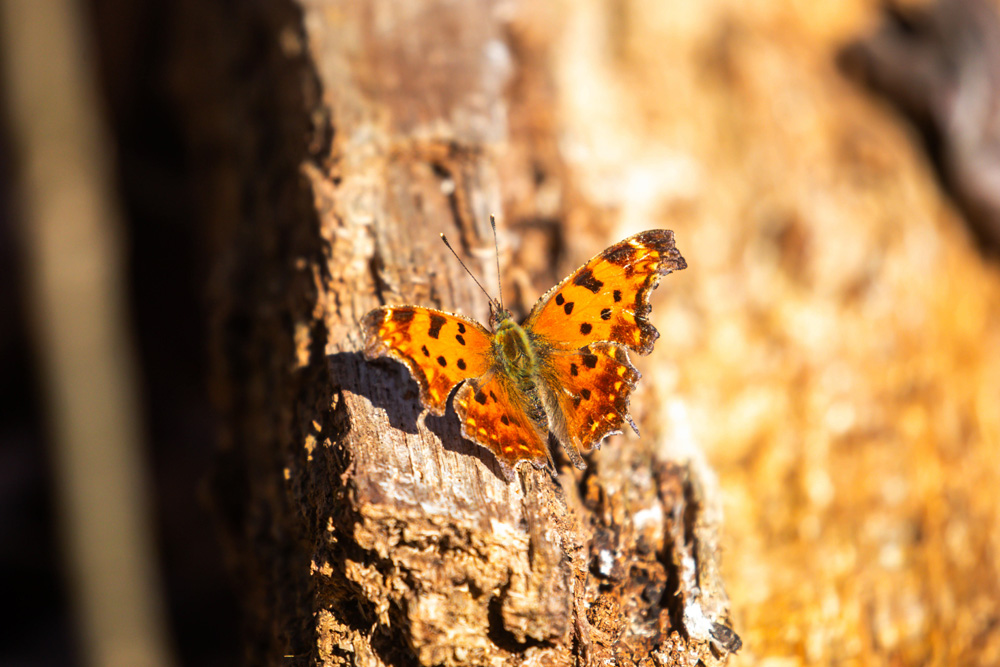
The most pleasant surprise of this year’s spring song has been the extended appearance of mourning cloaks. Where these butterflies have previously made brief cameos every two or three years, there were days in February where we saw three or four individuals throughout the forest! We learned their territories over a few weeks (the area where the wood chipper used to be? Hotly disputed!), and one of them took such a shine to our Finance & Administration Manager Kim that it landed on her hand almost every time we walked by.
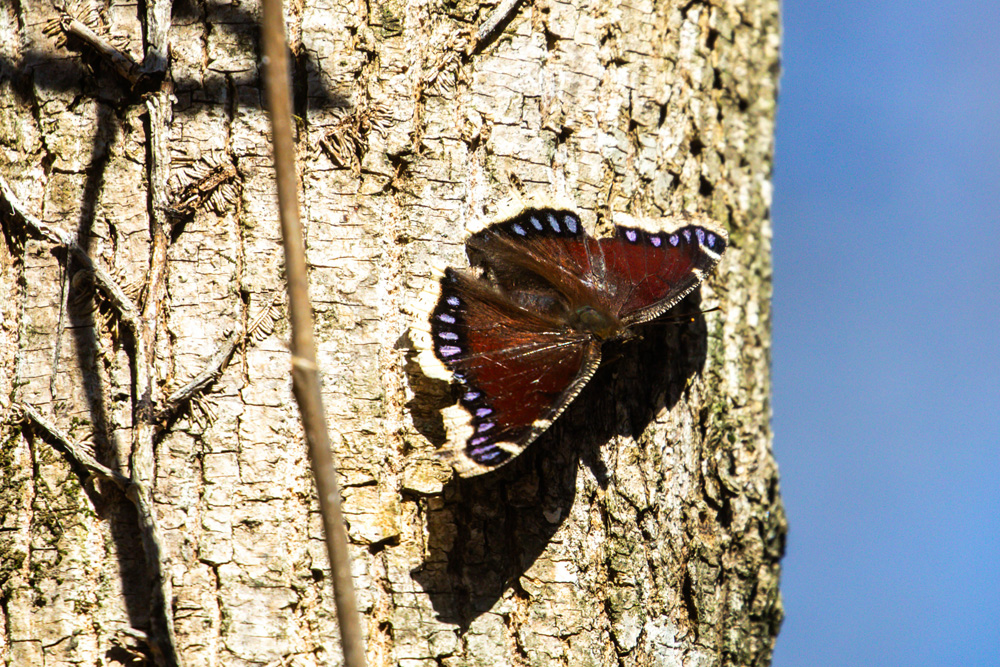
Nectar sources are limited during the early spring, and spicebush trees are some of the earliest bloomers. I enjoyed watching this pure green sweat bee who appeared to have taken a bath in the pollen.
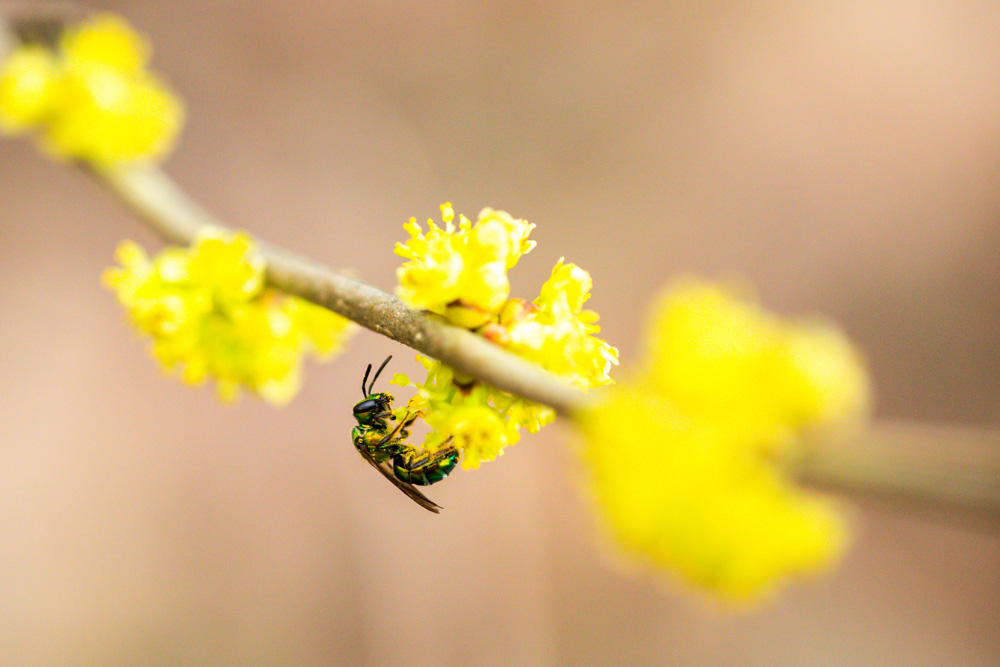
But even on days when the insects have been scarce, the superstars of spring have been putting on their show. These are the weeks when spring ephemeral wildflowers soak up all their energy for the entire year. Before the trees leaf out, these plants gather sunlight as well as moisture and nutrients from the soil. They store this energy underground, and in the fall and winter they use it to put out roots and create buds for the next year. We only get to witness a very short part of their life cycle, but it’s certainly the most visually stunning part.
Left: cutleaf toothwort; right: Jacob’s ladder

My eye was caught one afternoon by this striking insect, a passionflower flea beetle. These beetles are generally thought to feed only on passionflower vines, but this one was munching away on a wintercreeper leaf. I went on a bit of an Internet dive trying to figure out why that might be, and apparently there’s a similar, possibly undescribed species that eats Euonymus leaves (of which wintercreeper is one). Color me intrigued!
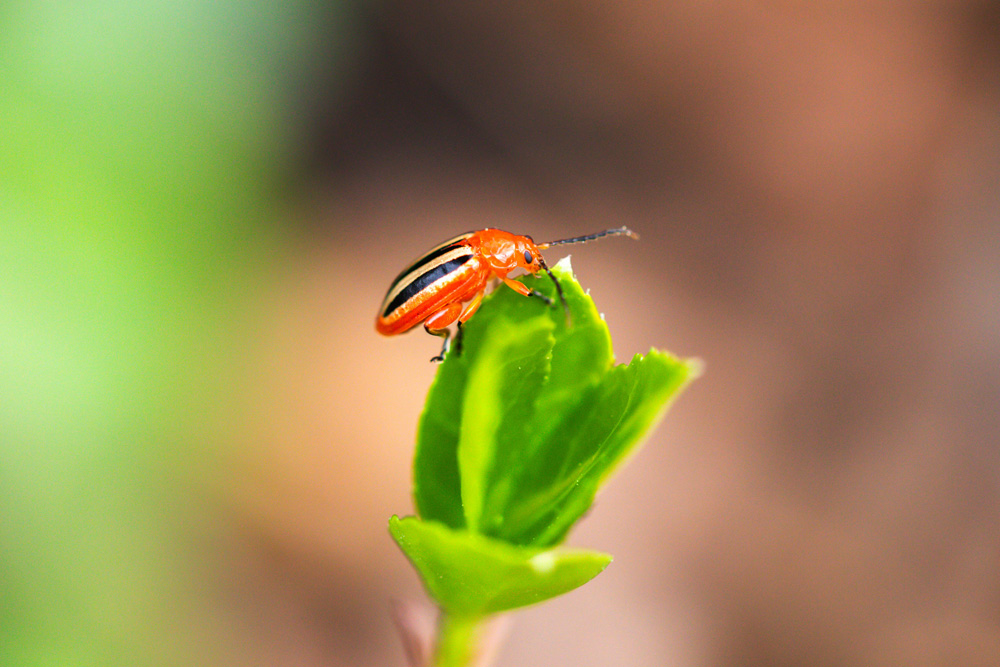
But most of the insects flying right now are bees. Some species are just as ephemeral as the wildflowers, and indeed, their emergence is timed perfectly to gather pollen from these flowers. Many species of mining bees take pollen only from a specific type of flower, ferrying the grains back to their underground nests to serve as food for their larvae, which will develop and remain underground until next spring, when they start the cycle all over again. This bee, visiting a spring beauty flower, is so coated in pollen that I couldn’t even guess at its identity!
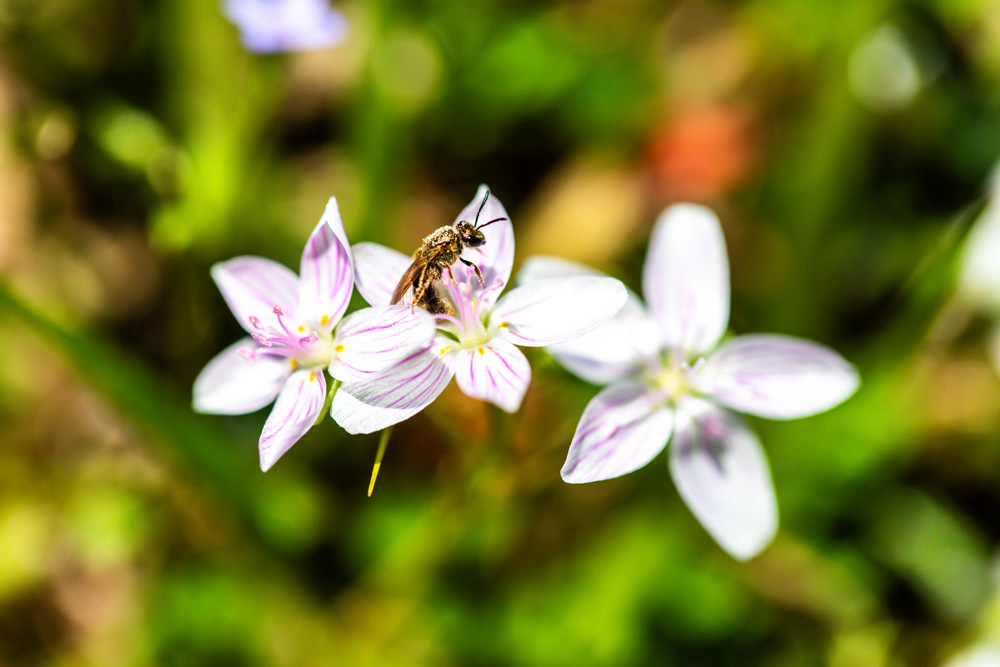
This one, however, is an unequal cellophane bee, surrounded by all the mud she’s excavated (first with her teeth, then with her legs) to build her home. After first stumbling upon an aggregation of pencil-sized nest openings last spring, I now have a mental search image that has meant I spot these little hidey-holes everywhere. This year I even witnessed one female emerge from a nest to be immediately pursued by no fewer than six males! The resulting scrum was not worthy of the Zen part of NatureZen, though, so I’ll leave that to your imagination.
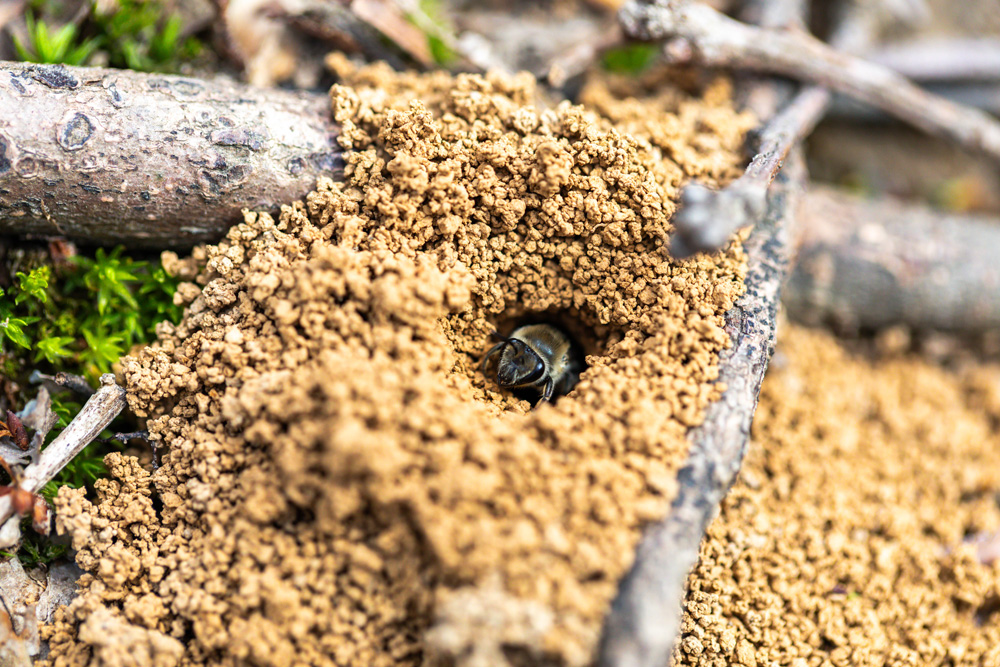
Whether I look at eye level or at my feet, I’m surrounded by beautiful flowers. The lacy, faded remnants of last year’s wild hydrangea blossoms form a contrast with the robust green leaves that the plants are currently producing. And it’s become a bit of a ritual to spend one afternoon lying in the dirt, trying to do the spring coralroots justice. These delicate orchids don’t bloom every year, and the flowers don’t last long. They also blend in with the leaf litter out of which they grow, making them a tough-but-worth-it spotting!
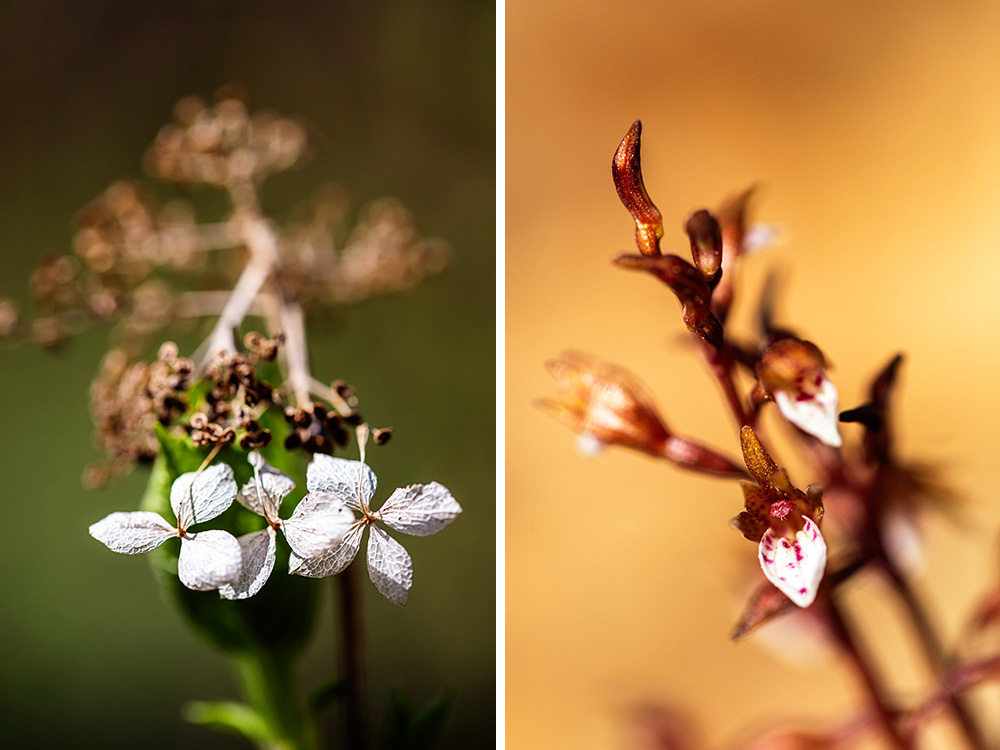
Another spring ritual: planting myself in front of the redbud trees beside the Overton Park Shell to admire the way the flowers resemble hummingbirds nectaring.
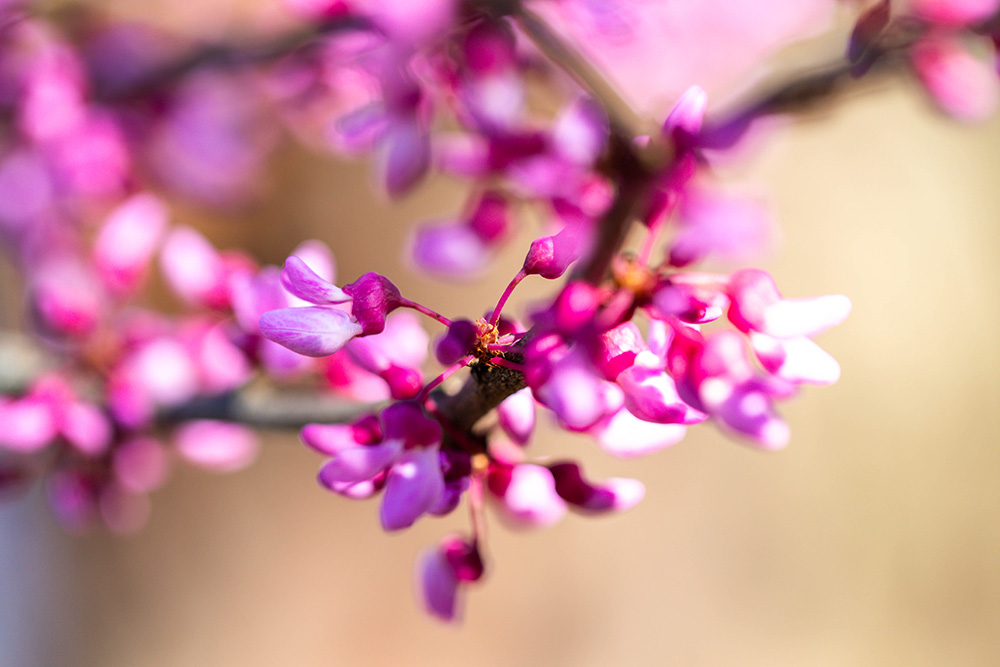
I didn’t think a Jacob’s ladder flower was big enough for more than one bee. I was wrong; this mining bee suitor (the smaller one on the right) came to plight his troth while the lady was having a drink. She could not have been less interested, and left him at the bar alone.
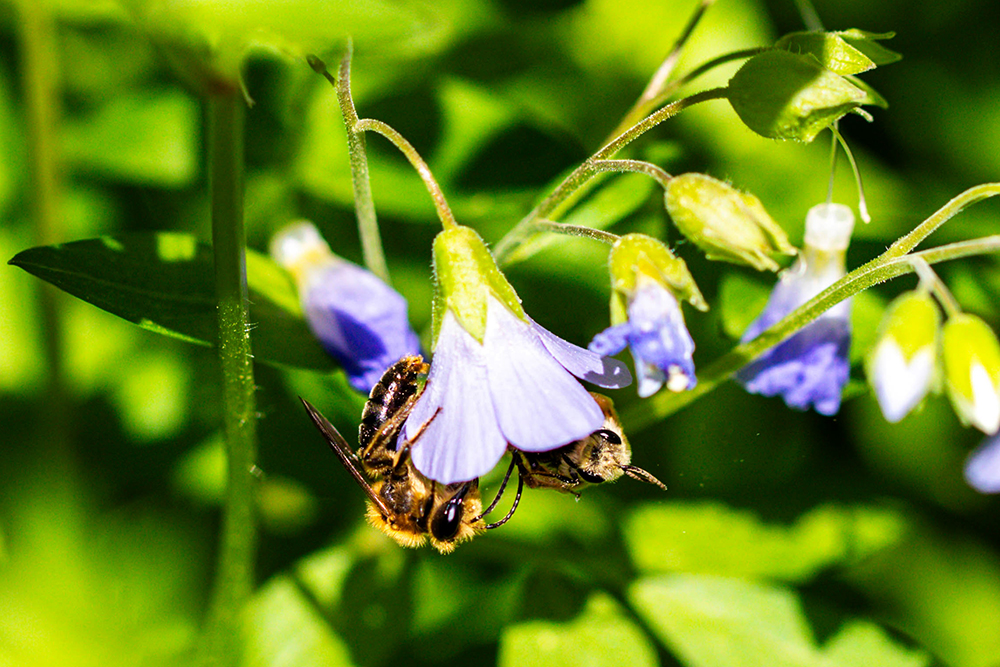
If I’m thinking of my favorite verses in the spring song, it’s a close contest between the subtle bells of Jacob’s ladder and the bright notes of the celandine poppy. I would probably sing the loudest for Jacob’s ladder because it attracts so many of my beloved pollinators, but there’s nothing like the joy created by putting sunshine in flower form.
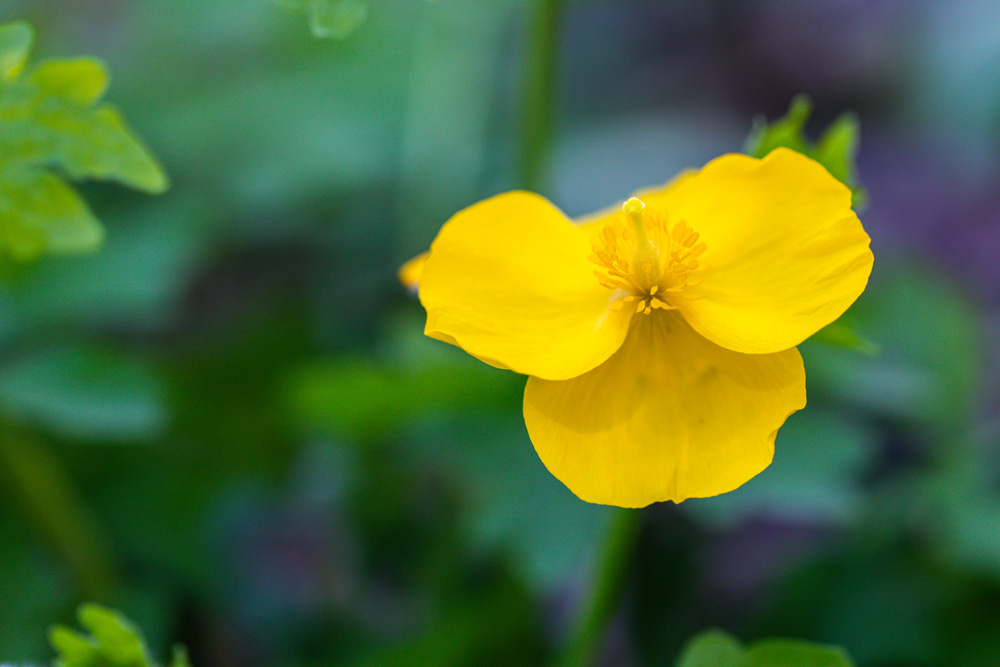
I also have a soft spot for wild geraniums, particularly because their flowers are so delicate. This one is a fresh bloom but already looks to be fading gracefully away, with its splotches and scrapes. I recently learned that these geraniums have their own associated mining bee species, so if you need me for the next few weeks, I’ll be haunting the geranium patches.
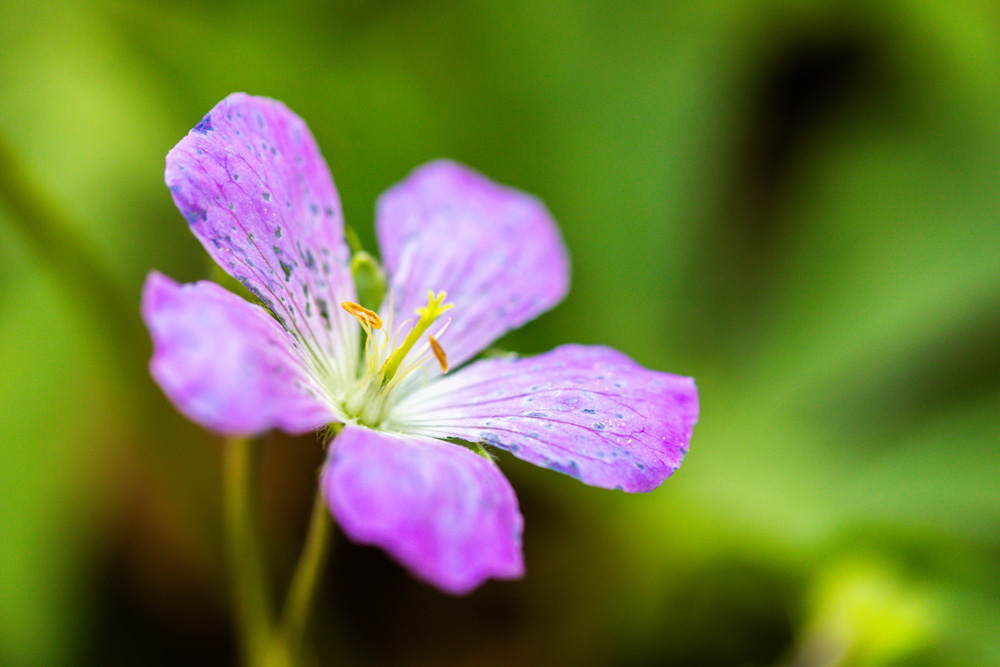
Finally, as the spicebush flowers have faded, it’s time for another small tree to step into the limelight. Common pawpaw flowers turn a wine-red when they open fully, but for a brief and lovely moment, they’re lime-green and fuzzy. Like so much of spring, this phase is blink-and-you’ll-miss-it, and that’s why I think there’s no more special time of the year.

Here’s hoping this year’s song doesn’t end for a good long time. I can’t wait to see what further interpretations nature has in store for us.



